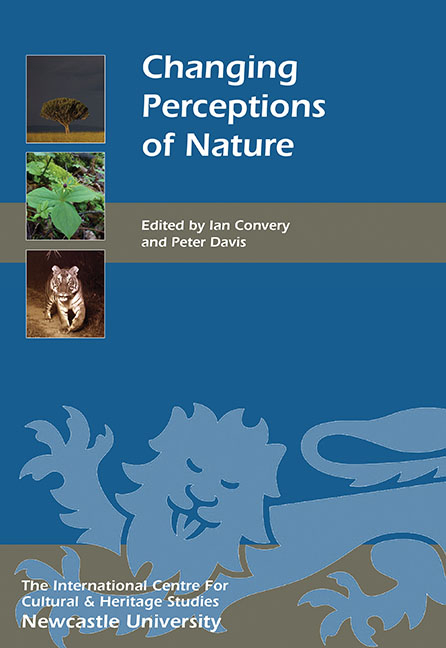Book contents
- Frontmatter
- Contents
- List of Illustrations
- Acknowledgments
- List of Abbreviations
- Foreword
- Introduction
- HISTORICAL PERSPECTIVES ON NATURE
- COLLECTING NATURE
- INTERPRETING NATURE AND LANDSCAPES
- 11 Changed Attitudes to Nature Reflected in the Transformation of Menageries to Zoos
- 12 Botanic Gardens: Changing Perceptions of Plants
- 13 Shifting Interpretations of the English Lake District
- 14 Facebook Nature: My Generation and Other Animals
- 15 Visual Narratives in Wildlife Film-making
- 16 A History of Half a Century of Wildlife Television and its Impact on Audiences
- 17 Landscape, Nature and the Contemporary Sublime in Illustrated Children's Literature
- CONSERVING NATURE
- PEOPLE–NATURE INTERACTIONS
- List of Contributors
- Index
- Miscellaneous Endmatter
12 - Botanic Gardens: Changing Perceptions of Plants
from INTERPRETING NATURE AND LANDSCAPES
Published online by Cambridge University Press: 26 October 2017
- Frontmatter
- Contents
- List of Illustrations
- Acknowledgments
- List of Abbreviations
- Foreword
- Introduction
- HISTORICAL PERSPECTIVES ON NATURE
- COLLECTING NATURE
- INTERPRETING NATURE AND LANDSCAPES
- 11 Changed Attitudes to Nature Reflected in the Transformation of Menageries to Zoos
- 12 Botanic Gardens: Changing Perceptions of Plants
- 13 Shifting Interpretations of the English Lake District
- 14 Facebook Nature: My Generation and Other Animals
- 15 Visual Narratives in Wildlife Film-making
- 16 A History of Half a Century of Wildlife Television and its Impact on Audiences
- 17 Landscape, Nature and the Contemporary Sublime in Illustrated Children's Literature
- CONSERVING NATURE
- PEOPLE–NATURE INTERACTIONS
- List of Contributors
- Index
- Miscellaneous Endmatter
Summary
Plants provide us with food and medicines as well as being a source of delight and inspiration. As a consequence, the maintenance of plant collections for scientific study and educational purposes has a long and distinguished history. According to Hill (1915), the Chinese should be credited as the founders of the botanic garden; the Han Emperor Wu Ti (140–86 BC) is known to have collected and grown a wide variety of food plants. The first model European garden may well have been that founded at Padua in 1545 (Alexander 1979), which to this day remains largely unchanged on a formal geometrical plan that dominated the layout of gardens in Europe for 300 years. The garden at Pisa may have been established in the same year.1 The botanist Luca Ghini (c. 1490–1556) created the Pisa garden and is acknowledged as the first person to preserve pressed plants on paper, so creating herbarium specimens (see Nepi, Chapter 8, this volume). Ghini was followed by the distinguished scholar Andrea Cesalpino (1519–1603), one of the first men to try to establish a classification system for plants. This pattern of building collections and classifying plants has been the core activity of botanic gardens ever since the sixteenth century and many of the earliest gardens, the majority established by universities, still survive today on their original site. Bologna (1547), Zurich (1560), Leiden (1577) and Montpellier (1598) are examples from continental Europe; in Britain the gardens of Oxford (1621), Chelsea (1673) and Edinburgh (1680) have unbroken lineage.
It is vital that botanic gardens are recognised as an integral part of a nation's heritage and culture; collectively the plants in any garden reflect the history of the work of the collectors, scientists and horticulturists who have been associated with it. Gardens have been created by private individuals such as John Tradescant (1570–1668), by Royalty (Kew), as a result of the expansion of Empire and to profit from new economic resources (Calcutta); in ninteenth-century Britain many enlightened local government authorities (for example Sheffield and Glasgow) established botanic gardens as havens of green space in industrial cities. Thus gardens have long been in a position to promote the appreciation of the natural world, as well as carrying out research which has benefits for biological conservation and humankind.
- Type
- Chapter
- Information
- Changing Perceptions of Nature , pp. 129 - 140Publisher: Boydell & BrewerPrint publication year: 2016

